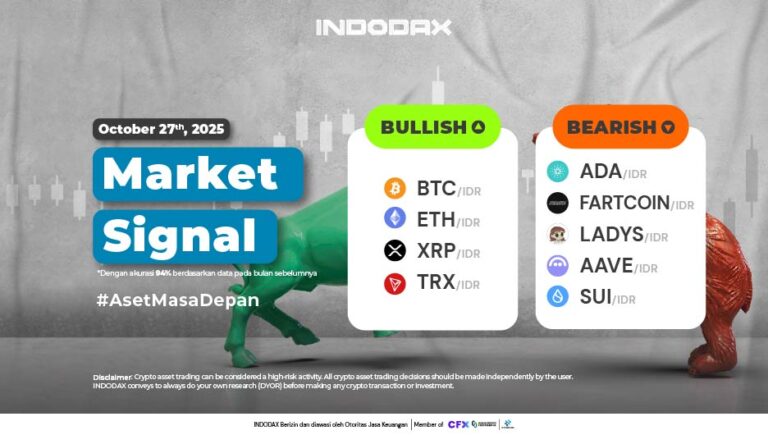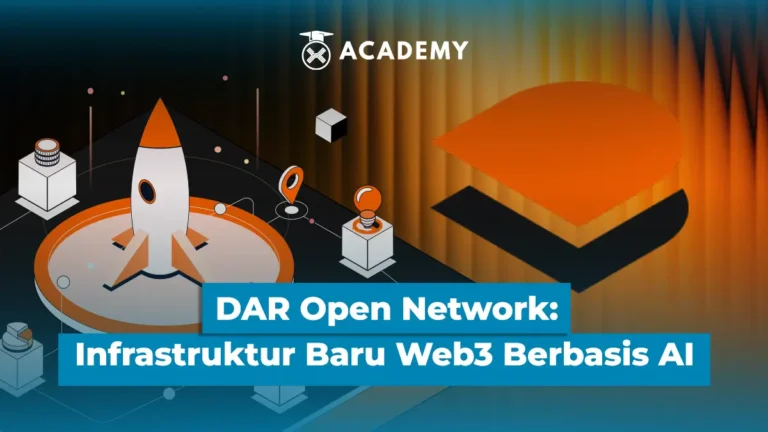In the blockchain ecosystem, one of the biggest challenges faced is interoperability, which is the ability of different networks to communicate with each other and share data.
Without an effective solution, this limitation can hinder adoption and innovation in the industry.
Chainlink presents the Cross-Chain Interoperability Protocol (CCIP) as a solution that enables the transfer of data and assets between blockchains safely, efficiently, and decentralized.
With this technology, the blockchain ecosystem can be more integrated, opening up new opportunities for the DeFi industry and smart contract-based applications.
This article will discuss in more depth what CCIP is, how it works, and its impact on the blockchain ecosystem and decentralized finance.
What is Chainlink Cross-Chain Interoperability Protocol (CCIP)?

Cross-Chain Interoperability Protocol (CCIP) is a standard protocol designed to improve interoperability between different blockchain networks.
With CCIP, data and value transfer can be done seamlessly and trustlessly between different blockchains.
This ensures that Chainlink oracles can function optimally in a multi-chain environment, creating a more connected and collaborative blockchain ecosystem.
In the blockchain world, each network usually operates in isolation (siloed) making it difficult to communicate directly with other blockchains.
Without an interoperability solution like CCIP, assets and data on one blockchain cannot be easily accessed or utilized by other networks.
CCIP is here as a solution that enables secure and efficient communication between blockchains, opening up new opportunities for innovation in the decentralized finance (DeFi) sector and smart contract-based applications.
It is important to note that CCIP was developed by Chainlink, a leading decentralized oracle platform that has long been known as a trusted data provider in the blockchain ecosystem.
The main advantage of CCIP lies in its decentralized nature and support from Chainlink’s strong oracle network.
With this approach, CCIP ensures that there is no single point of failure in the data transfer process between blockchains, and guarantees data accuracy and resilience to manipulation.
This makes CCIP a unique and invaluable interoperability solution in the blockchain world.
People Also Read: What is Blockchain OS? Definition, Features, and Impact on Web3
How Does CCIP Work?

CCIP works by connecting different blockchains through a decentralized data delivery mechanism, token transfer, and security system. Here’s how it works:
1. Main Process in CCIP
1.Message Passing
CCIP enables the sending of data or instructions between blockchains through a message passing mechanism.
This technology works by validating the status of the source blockchain, then forwarding the necessary transactions to the destination blockchain.
In this way, different blockchains can exchange information with each other without losing security or decentralization.
1.Programmable Token Transfers
One of the main features of CCIP is its ability to facilitate token transfers between blockchains in a more flexible way than traditional cross-chain solutions.
This process does not only move assets, but also allows the execution of additional functions, such as swaps, staking, or depositing tokens into smart contracts in a single transaction.
With this approach, CCIP supports innovations such as cross-chain decentralized exchanges (DEXs), cross-chain money markets, and connected blockchain-based games.
1.Risk Management Network
To maintain security and prevent high-risk transactions or attacks on the network, CCIP is equipped with a Risk Management Network system.
This system acts as a watchdog that automatically detects suspicious activity, such as exploits or unusually large fund movements.
With this mechanism, the risk of loss due to hacking or system failure can be reduced.
2. Technology Used
1.Smart Contracts
CCIP uses smart contracts to execute transactions automatically without the need for intermediaries.
When an asset or data is sent via CCIP, the smart contract will lock or burn tokens on the source blockchain and then mint or open access to the same token on the destination blockchain.
1.Chainlink Oracle Network
As part of the Chainlink infrastructure, CCIP utilizes an oracle network to ensure the security and accuracy of data sent between blockchains.
Chainlink oracles are responsible for verifying the status of transactions on both blockchains and ensuring that the transfer of assets or data takes place according to the established rules.
In addition, the system also maintains the reliability of the network from interference or manipulation by external parties.
People Also Read: Chainlink: How It Works and How to Buy Its Crypto Assets
Advantages of CCIP Compared to Other Protocols
CCIP has advantages in security, compatibility, and ease of integration compared to other protocols. Here is the review:
1. Strong Security
Chainlink CCIP offers a high level of security with support from the Risk Management Network. This system is designed to prevent cross-chain attacks by detecting suspicious activity in real-time.
With this mechanism, the transfer of assets and data between blockchains becomes more secure and trustworthy, reducing the risk of exploitation or misuse in cross-chain transactions.
2. Wide Compatibility
CCIP supports various major blockchains such as Ethereum, Polygon, and Avalanche, enabling wider interoperability.
With this connectivity, decentralized platforms and applications (dApps) can reach more users and access liquidity from various blockchain ecosystems.
This provides a great advantage for developers who want to build multi-chain solutions without compatibility limitations.
3. Easy to Integrate
Compared to other protocols that often require complicated technical settings, CCIP is designed to be easily adopted by developers.
With a single integration, CCIP allows applications to communicate with multiple blockchains without having to build separate connections for each network.
This not only saves development time and costs but also opens up opportunities for innovation for cross-blockchain applications with greater flexibility.
Impact of CCIP on the Blockchain and DeFi Industry
CCIP brings major changes to the blockchain ecosystem by improving interoperability, expanding DeFi adoption, and reducing fragmentation between networks. Here is a more detailed explanation:
1. Facilitating Cross-Blockchain Transactions
CCIP allows users to transfer tokens between networks without the need for intermediaries, making transactions more efficient and secure.
With this solution, the barriers to blockchain interoperability can be reduced, enabling a more connected and accessible ecosystem for various users.
2. Increasing DeFi Adoption
By providing reliable interoperability, CCIP provides major benefits for DeFi protocols.
Decentralized financial platforms can reach more blockchain ecosystems, improve service accessibility, and expand the user base.
This opens up new opportunities for the development of more flexible and inclusive DeFi products.
3. Reduce Ecosystem Fragmentation
CCIP serves as a universal communication standard that allows blockchains to interact in a more integrated manner.
With this protocol, isolation between networks can be reduced, creating a more cohesive, efficient blockchain ecosystem that is ready to support innovation across various industry sectors.
Conclusion
So, that was an interesting discussion about CCIP: Blockchain Interoperability Solution by Chainlink that you can read in full at the Crypto Academy at INDODAX Academy.
In conclusion, CCIP is an interoperability solution developed by Chainlink to connect various blockchains securely, efficiently, and decentralized.
With strong security features and broad compatibility, CCIP not only facilitates cross-network communication, but also opens up new opportunities for the blockchain ecosystem to grow more integrated.
The adoption of CCIP has the potential to change the landscape of the blockchain industry, especially in DeFi and digital asset transfers, by providing more flexible, secure, and trusted connectivity.
FAQ
1.What is Chainlink Cross-Chain Interoperability Protocol (CCIP)?
CCIP is an interoperability protocol that enables secure communication and asset transfers between blockchains.
2.How does CCIP work in asset transfers?
CCIP uses Chainlink smart contracts and oracles to ensure secure and automated cross-blockchain asset transfers.
3.What are the advantages of CCIP compared to other solutions?
Its advantages lie in high security, wide compatibility, and easy integration with other blockchain ecosystems.
4.Is CCIP only for token transfers?
No, in addition to token transfers, CCIP also supports data communication and instructions between blockchain networks.
5.How does CCIP impact the future of blockchain?
CCIP helps address blockchain fragmentation, improve interoperability, and accelerate the adoption of DeFi globally.





 Polkadot 10.18%
Polkadot 10.18%
 BNB 0.86%
BNB 0.86%
 Solana 4.89%
Solana 4.89%
 Ethereum 2.37%
Ethereum 2.37%
 Cardano 1.68%
Cardano 1.68%
 Polygon Ecosystem Token 2.13%
Polygon Ecosystem Token 2.13%
 Tron 2.89%
Tron 2.89%
 Market
Market


